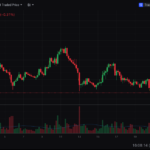Pair trading is a sophisticated and market-neutral trading strategy that involves identifying and exploiting the relative price movement between two correlated assets. Whether in stocks, commodities, or currencies, this strategy is designed to profit regardless of market direction, making it a popular choice among experienced traders and hedge funds.
How Pair Trading Works
The core idea of pair trading is simple yet effective: identify two assets with a historical price relationship and trade them based on deviations from this relationship. Traders buy the undervalued asset (long position) and sell the overvalued asset (short position) when their prices diverge. The expectation is that the assets will eventually revert to their historical mean, yielding a profit.
For example:
- If Stock A and Stock B usually trade in tandem, but Stock A suddenly drops while Stock B remains stable, a trader might buy Stock A and short Stock B.
- When the prices revert to their mean, the trader exits both positions, capturing the price differential.
Key Steps to Implement Pair Trading
- Identify Correlated Assets
Use statistical tools like correlation coefficients or cointegration analysis to find asset pairs that have a stable historical relationship. - Monitor the Spread
Calculate the price spread between the two assets and track its historical average. Deviations from this mean signal potential trading opportunities. - Set Entry and Exit Points
Define thresholds for entering and exiting trades based on the spread. For instance, you might enter a trade when the spread widens by 2 standard deviations and close it when it narrows back to the mean. - Risk Management
As with any strategy, risk management is crucial. Set stop-loss levels to minimize losses if the spread continues to widen unexpectedly.
Advantages of Pair Trading
- Market Neutrality: The strategy is largely immune to overall market direction, as it profits from the relative performance of two assets.
- Hedge Against Market Volatility: By pairing long and short positions, traders reduce exposure to broad market swings.
- Diversification: Pair trading can be applied across various asset classes, including equities, ETFs, and commodities.
Challenges and Risks
- Breakdown of Correlation: Correlations between assets may weaken or disappear, leading to unexpected losses.
- Execution Risk: Pair trading often requires precise execution, and delays can erode profitability.
- Leverage and Costs: Using leverage to amplify returns can backfire, especially when spreads widen further than anticipated. Transaction costs and borrowing fees for short positions also eat into profits.
Tips for Success in Pair Trading
- Robust Analysis: Use quantitative models and historical data to identify reliable pairs.
- Regular Monitoring: Continuously assess the correlation and performance of the selected pairs.
- Adaptability: Be ready to adjust or abandon pairs that no longer exhibit a predictable relationship.
Conclusion
Pair trading is a disciplined and data-driven approach that appeals to traders seeking consistency and reduced market exposure. However, it requires a keen understanding of statistical relationships, strong analytical tools, and rigorous risk management. When executed correctly, pair trading can be a powerful strategy for generating steady returns.
Disclaimer: This article is for informational purposes only and should not be considered investment advice. Always conduct your own research and consult a financial advisor before engaging in trading activities.







